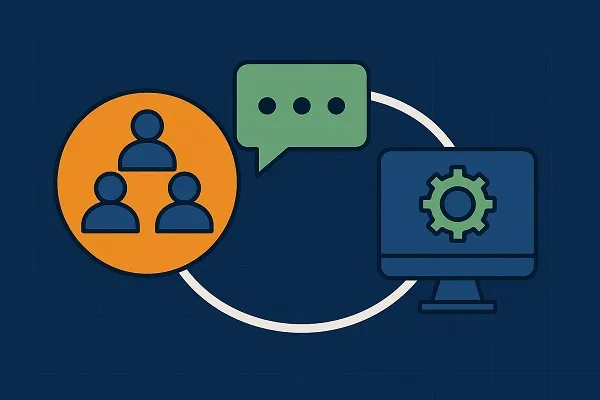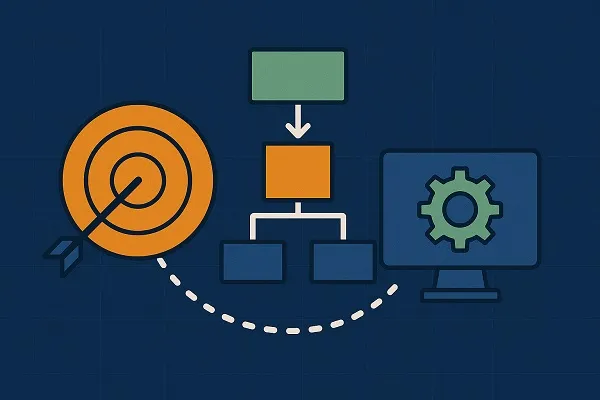IT support is not just a technical function—it is a strategic asset that drives business continuity, productivity, and long-term growth. Integrating IT support into your strategic planning ensures that technology aligns with business goals, protects against operational risks, and empowers teams with reliable systems.
Whether you’re a growing small business or an established enterprise, the role of IT support in your strategic framework is critical for staying competitive, agile, and resilient.
The Strategic Value of IT Support
Supporting Business Goals with Technology
Every business strategy today relies on technology. From sales platforms to communication tools, almost every core function depends on IT infrastructure. Having IT support baked into your strategic plan ensures:
- Systems are aligned with business objectives.
- Technology investments deliver measurable returns.
- Downtime is minimized to protect revenue streams.
IT support teams help evaluate and implement tech solutions that directly support growth initiatives, process automation, and customer engagement.
Risk Management and Business Continuity
An overlooked IT function can become a costly vulnerability. Strategic planning with IT support in mind mitigates this.
Key benefits include:
- Proactive cybersecurity measures to reduce threats.
- Backup and disaster recovery planning.
- Compliance with data regulations (e.g., GDPR, HIPAA).
By integrating IT support early into strategic decision-making, businesses avoid scrambling during crises and instead maintain operational continuity.
Enhancing Operational Efficiency
Streamlining IT Systems and Workflows
Poorly managed IT environments lead to inefficiencies, user frustration, and avoidable errors. Strategic IT support contributes by:
- Standardizing software and hardware environments.
- Automating repetitive tasks through scripting and tools.
- Offering centralized help desk services.
With these efficiencies in place, employees spend less time troubleshooting and more time focusing on their core responsibilities.
Reducing Unplanned Downtime
Downtime costs money. A strategic IT support plan includes monitoring tools, preventive maintenance schedules, and responsive support protocols that:
- Identify and fix issues before they escalate.
- Provide real-time alerts and performance tracking.
- Offer service-level agreements (SLAs) to ensure accountability.
By planning for IT issues before they arise, your business stays up and running more consistently.
Empowering Growth and Innovation

Scaling IT Systems with Business Expansion
As companies grow, their IT needs evolve. Strategic IT support ensures scalability through:
- Cloud-based infrastructure that grows with demand.
- Flexible software licensing models.
- Scalable cybersecurity frameworks.
Without a plan, technology can quickly become a bottleneck. Strategic IT support keeps systems lean, adaptable, and ready for change.
Supporting Digital Transformation
Digital transformation is not a one-time project—it’s an ongoing evolution. IT support is essential in facilitating and maintaining that transformation by:
- Training employees on new tools and platforms.
- Ensuring compatibility between legacy and modern systems.
- Managing migrations with minimal disruption.
Businesses that overlook IT support during digital change often face setbacks and user resistance.
Strengthening Cybersecurity Through Strategy
IT Support as Your Frontline Defense
Cyber threats are growing in complexity and frequency. When IT support is part of the strategic plan, cybersecurity becomes proactive rather than reactive.
Strategic IT support helps with:
- Endpoint protection and firewall management.
- Regular software updates and patching.
- User access control and authentication systems.
By treating cybersecurity as a strategic priority, businesses protect customer trust and avoid reputational damage.
Ongoing Cybersecurity Awareness
Even the best tech tools can fail if employees aren’t trained to use them securely. IT support plays a key role in:
- Running phishing simulations.
- Educating staff on password hygiene.
- Creating a culture of digital security.
Security isn’t just a tech issue—it’s an organizational one. IT support helps embed this mindset across your workforce.
Enabling Informed Decision-Making
IT Metrics and Reporting for Leadership
When IT support is integrated strategically, it provides executives with data that informs high-level decision-making.
Useful insights may include:
- System uptime and performance reports.
- Help desk ticket trends and recurring issues.
- Cyber threat activity and mitigation outcomes.
Access to these metrics helps leaders prioritize investments and address inefficiencies with clarity and confidence.
Budgeting and Cost Forecasting
IT support teams help finance departments understand where money is best spent, including:
- Forecasting hardware and software refresh cycles.
- Planning for licensing renewals.
- Identifying areas for cost-saving through consolidation or automation.
Including IT in budget planning helps avoid overspending or critical underinvestment in essential infrastructure.
Aligning IT Support with Company Culture

Building Trust and Accountability
When employees know their tech issues will be resolved quickly and respectfully, it builds trust across the organization.
A strategic approach to IT support fosters:
- Responsiveness and professionalism.
- Clear communication between departments.
- Employee satisfaction and retention.
People are more productive when they know technology won’t be a barrier to doing their job.
Supporting a Remote and Hybrid Workforce
IT support has become a cornerstone of remote work. Strategic planning ensures distributed teams have the tools and access they need:
- Secure VPN and cloud services.
- Remote device management.
- Collaborative platforms with IT oversight.
Businesses with strong IT support systems can offer flexible work environments without compromising productivity or security.
Common Pitfalls of Excluding IT from Strategy
Short-Term Fixes Over Long-Term Solutions
Without strategic planning, IT issues are often resolved with band-aid solutions. This reactive approach leads to:
- Patchwork systems that don’t scale.
- Technical debt that becomes harder to manage.
- Higher long-term costs.
Strategic IT support focuses on sustainable solutions that evolve with the business.
Missed Opportunities for Innovation
Technology is a major driver of innovation. If IT support is left out of strategic conversations, businesses miss:
- Early adoption of game-changing tools.
- Integration between business units.
- Cross-departmental efficiencies.
Bringing IT support into the planning process encourages innovation across the board.
How to Integrate IT Support into Your Strategy

Assess Your Current IT Environment
Start by evaluating your existing IT assets, policies, and workflows. Involve your IT team to:
- Identify pain points.
- Highlight opportunities for improvement.
- Establish benchmarks for performance.
Include IT Leadership in Strategic Discussions
Make your IT leaders part of core strategic meetings. Their insight can help:
- Spot risks before they become issues.
- Identify technologies that align with company goals.
- Balance innovation with stability.
Set Clear Goals for IT Performance
Like any business unit, IT should have key performance indicators (KPIs). Examples include:
- Average help desk response times.
- Percentage of automated workflows.
- System uptime targets.
By tying these goals to broader company objectives, IT becomes a driver of success.
Building your strategic plan without IT support is like planning a road trip without checking the map. Technology now underpins every aspect of operations—from internal processes to customer experiences—and ignoring it as part of your strategy leaves you vulnerable to inefficiencies, risks, and stagnation.
By making IT support a core part of your strategic plan, you position your business to be smarter, safer, and more competitive in an increasingly digital world.
Content reviewed and published by Tier2Tek Staffing Editorial Team .

